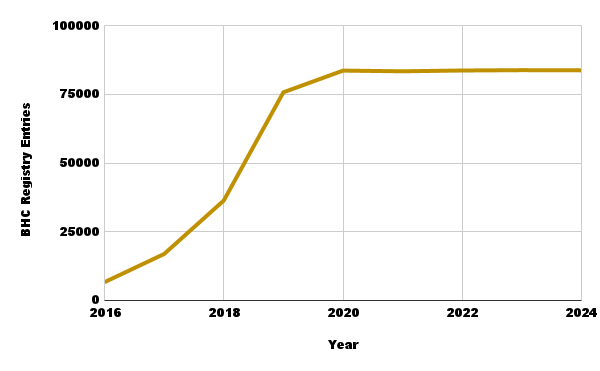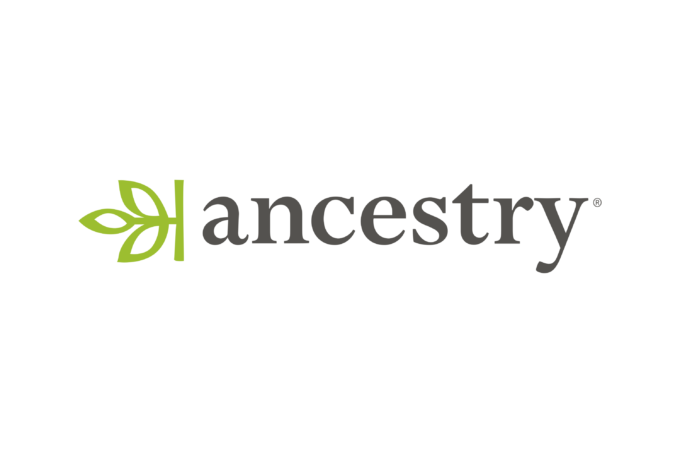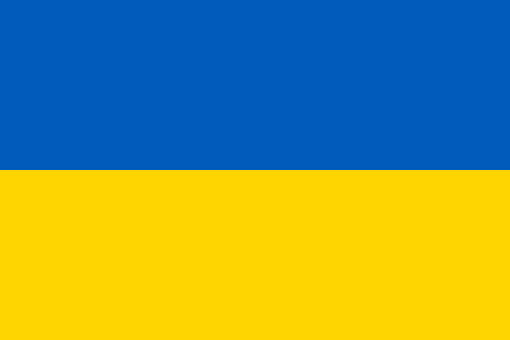Yesterday I quoted a recent BBC article. Another quote from that article is “The child migration scheme sent a group of 100,000 impoverished children from Britain to overseas colonies between 1869 and the 1940s.”
That’s “overseas colonies” not just Canada. How many of those came to Canada?
The British Home Child Registry states “an estimated over 100,000 children were emigrated from the United Kingdom to Canada.”
The graph below is compiled from data at the British Home Child Registry and archived from that site through the archive.org Wayback Machine.

Since 2020 it has remained at over 83,000 entries in the database. As stated at the site “the Registry is updated online at least weekly.” There have been adjustments, down as well as up since 2020.
Where will the additional 17,000 be found? Could there be missing years? Unfortunately it isn’t possible to search that database by year of migration.
Two other sources are worthy of attention.
Library and Archives Canada states that “Between 1869 and the late 1930s, over 100,000 juvenile migrants were sent to Canada from the British Isles during the child emigration movement.” The Home Child Records database “provides access to more than 245,000 names of Home Children from records held at Library and Archives Canada and elsewhere.”
The much larger number is because it indexes mentions. A person may be the subject of entries in different sources — passenger lists, inspection reports, lists from immigrating agencies, death compilations, and more.
A database I’d overlooked is Canada, Home Children Immigration Records Index, 1869-1930 from Findmypast. It includes 125,086 results. Findmypast acquired this collection when it purchased Mocavo in 2016.
A couple of things to watch for in this FMP database. 80 records for the Liverpool Sheltering Home have no date given. The records turn up in all years from 1869 to 1930. The total of 125,086 accounts for that. Also, the collection includes many who had no association with a home, they were just (relatively) young people. That includes my 15 year old great uncle who arrived in 1903 bound for a relative in Saskatchewan.
Some were not that young. For example, the median age of the 24 immigrants from the Dublin Union & Dublin by Lamplight Institution in 1869 is 22.5 years. Likely different sources use different ages as cut-off or other criteria such as whether the child/person came in a party brought by an agency.
I’m doubtful there were as many as 100,000 home children, as properly defined, who arrived in Canada between 1869 and the start of WW2.
 For orders over $25, save 20% on all in-stock items & digital books until Saturday 27 January at midnight EST!
For orders over $25, save 20% on all in-stock items & digital books until Saturday 27 January at midnight EST!


 Most of the time, I write about new databases that are of no interest to me or most readers. Life is like a box of chocolates — joy when a new collection appears online for an area of your family history interest. I had one on 18 January with the 15,054,046 names in the North Riding of Yorkshire electoral registers addition on Ancestry.
Most of the time, I write about new databases that are of no interest to me or most readers. Life is like a box of chocolates — joy when a new collection appears online for an area of your family history interest. I had one on 18 January with the 15,054,046 names in the North Riding of Yorkshire electoral registers addition on Ancestry. OGS Toronto Branch hosts leading genealogist, as well as newspaper editor and publisher, Dave Obee, for its first online monthly meeting of 2024 on Monday, 22 January, at 7:30 pm.
OGS Toronto Branch hosts leading genealogist, as well as newspaper editor and publisher, Dave Obee, for its first online monthly meeting of 2024 on Monday, 22 January, at 7:30 pm.
 BIFHSGO members likely received an email from Membership Director
BIFHSGO members likely received an email from Membership Director  Sheffield Ancestry? If so, the 32,437 new records released this week by FMP, sourced from Sheffield City Archives and Local Studies Library, may help.
Sheffield Ancestry? If so, the 32,437 new records released this week by FMP, sourced from Sheffield City Archives and Local Studies Library, may help.